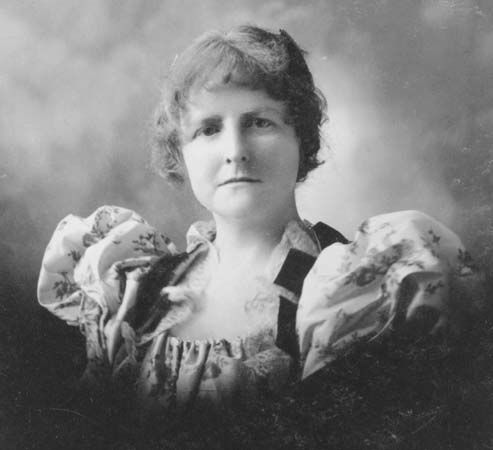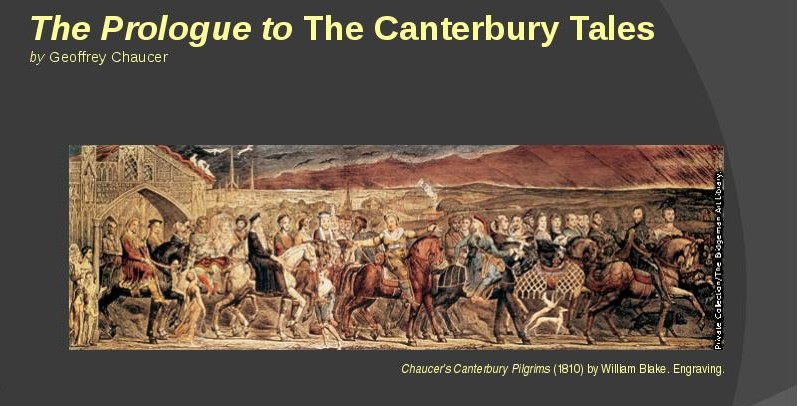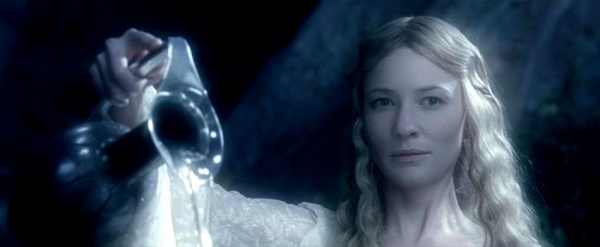Mary E. Wilkins Freeman’s Mother: True New Woman
The role of women in literature, as in life, is continually shifting.
Many women of the nineteenth century, tired to “embrace the dominant middle-class Cult of True Womanhood by constructing a poetic voice that is pious, pure, submissive, and concerned with the domestic sphere” (Cane, 151). However, in the late nineteenth and early twentieth centuries, a change began among women.
Women were beginning to gain different priorities and to focus more on things outside the home.
With this change in priority came the idea of the “New Woman” in approximately the 1890’s (Whitson, 181). “Unlike the true woman of previous decades… the new woman was seen as independent, ambitious, educated, and a formidable consuming force” (181).
These new women appeared to break the model of the True Woman of the nineteenth century whose work and happiness were focused only on their homes and families. This new woman was not accepted readily or by all people. It was believed that the home was the center of personal life and the place in which one developed their individuality.
Therefore, some people believed that “women’s emergence into public life threatens our individuality” (Gough, 168).
This change of the roles of women was reflected in the works of writers of the time. Female characters began to become more independent and self centered than their pious and submissive predecessors.
According to Donald Pizer in reference to three stories written by Mary Wilkins Freeman, Edith Wharton and Kate Chopin, “[the female characters] are not lovably inept, clumsily moralistic, or proper even when bold. Rather they are themselves and are thus both weak and strong, selfish and generous, impetuous and calculating. They are individuals rather than types” (Pizer, 112).
Where as women had been seen as subservient to their male counterparts previously, they were beginning to create a new role that fit their needs and wants.
Some feminist critics now see this submission to men as a form of abuse. According to Ashley Montagu
The forms of chivalry and etiquette…were originally not really intended as friendly acts. They really represented ritualized performances by Henry the Eighth…who, in effect, is saying: ‘As your superior, I am called upon to give you my support and make things easier for you. You as an inferior person, are in all respects, less capable than I; and as long as you continue to recognized the facts and remain submissive and dependent, I will continue to show you the respect you believe you deserve. Chivalry was thus a kind of fictitious benevolence…In other words, a putdown (Montagu, 94).
Submission of any kind has evolved from being the duty of all women to the surest form of weakness and abuse.
Simone De Beauvoir even questions the dignity the role of wife offers to women. She says that man has the right to be independent from any one else while a woman is essentially tied to the home due to the “reproductive and domestic role to which woman is confined” (De Beauvoir, 426). De Beauvoir goes on to say that man does need woman, but only likes to have her as a work mate, someone he can “unload certain drudgery upon” (426).
Male authors, such as Samuel Richardson even begin to portray submission as folly.
“Thinking in terms of moral law rather than unmeasurable love, Richardson imposed definite limits on a wife’s obedience…The total submissiveness of Clarissa’s mother…is presented as a sign of weakness rather than virtue, and is shown to be self defeating” (Diamond, 120).
By the time of Edith Wharton, women appear to have completely shifted from the role of true woman.
In Wharton’s works, women are no longer looking for men who they love and can provided financial security. They are now more focused on money and the power money has now achieved (Reynolds, 51).
Charles Dana Gibson uses the word dead instead of married when he describes his female characters, or “Gibson Girls” (Beetham, 164). He is also described as breaking from the previous conceptions of woman because the characters he creates are strong and independent.
Two other such female writers to create female characters of the new order are Charlotte Perkins Gilman and Mary E. Wilkins Freeman.
Both women wrote of women in the role of the emerging new woman. However, the lengths to which each goes in order to convey the changes they wish to see in their gender are very different.
Gilman believed very strongly that the woman was made to essentially be the cook, housekeeper and slave to a man when they married. She did not feel that this was fair to her sex, nor would it be fair if the roles were reversed. Instead, she sought equality for the sexes (Allen, 66-7). Gilman was unafraid to vocalize her feminist goals and ideals (Glasser, 217). “In her least readable and most cumbersome fiction, Freeman strayed so far from Gilman-like protest that she allowed her women characters to acquiesce and become subservient” (Glasser, 217). Gilman’s work tended to be more forceful, the message being almost completely unavoidable.
According to this initial rediscoverer, “The Yellow Wall-paper” represented such a traumatic break from its historical situation that readers were not even able to see it for what it actually was. What they did see horrified them, precisely because of the radical feminist politics of the story. Among other things, it mounted a feminist attack ‘on the ideal of a submissive wife’ (McGowan, 21).
Gilman’s work focused on women of all types, writing about the “the lives and personalities of women who accept the Victorian ‘true womanhood’ ideal of mother and wife” (Reichardt, xii) and many others.
Freeman’s women protagonists, therefore, form the backbone of her fiction and, looked at collectively, give us insight not only into Freeman’s art but into her vision of women’s experiences in this time and place (xiii). While the women of Freeman’s fiction where not as obviously fighting for the idea of the new woman, they worked in more subtle ways to move their cause forward. Mother’s move in The Revolt of “Mother,” was seen by Mother’s neighbors were appalled by her move, to the point that the local minister felt the need to come and try to convince her she was in the wrong (Freeman, 643).
The view of the critics is that female characters fall into two categories, that of feminist or that of subservient wife.
However, it is possible for women to fulfill both roles.
In Freeman’s, The Revolt of “Mother”, Mother is both a “New Woman” and a woman of God who is obedient to her husband.
Mother is stuck in a difficult situation in Freeman’s short story. She desires both to listen to and follow her husband while she also desires to do what is best for the rest of her family.
While she never quotes scripture, it appears that she knows Father is the head of the household and that she is called to submit to her husband (Ephesians 22).
Since Father and Mother married one another, Father has been promising to build a bigger home for Mother and the family. However, as they continue on in life, Father appears to find some other priorities. The things that he chooses to do instead of building a new home are beneficial for the family.
However, they have reached the point where they are stable in their finances and the family has out grown the home they are in. The need for a new barn is not nearly as great as the need for a new home.
A True Woman and a New Woman would, according to critics, do two different things in this situation.
The true woman, would be pious and obedient to the head of the household whereas a new woman would take extreme action, possibly up to even leaving her family behind to do what she feels is best for her personally, not necessarily for the family.
However, the reaction of Mother in this circumstance can easily fit into the categories of True Woman as it is defined Biblically and New Woman in the way she progresses from the silent, obedient wife to the helpmate God created for man.
The True Christian Woman is described in various places in the Bible, most notably in Proverbs 31 and Ephesians 5. Each of these chapters outline the characteristics expected of these women in detail.
In Proverbs 31, the author speaks of the different relationships and responsibilities in the life of a Christian wife. She is expected to be productive and work with “willing hands” (Proverbs 31.13). Her first priority is to care for her family, constantly looking after their needs. She is described as rising “while it is yet night/and provides food for her household/and portions for her maidens…She looks well to the ways of her household/and does not eat the bread of idleness” (Proverbs 31.15 & 27).
Even more specifically, the True Christian Woman is an example to her children, who will “rise up and call her blessed (28). Again, the specific relationship between husband and wife is addressed.
In Ephesians, women are told to submit to their husbands and in Proverbs 31, that the
heart of her husband trusts in her,
and he will have no lack of gain.
She does him good, and not harm,
all the days of her life (11-12).
While Mother is on the verge of the independent woman, she still holds onto the ideals of a True Woman. Mother is both a New and a True woman, which can be seen in the way she cares for her house, her children and her husband.
As described in Proverbs, Mother cares for her household. She is not idle during her day. Her time is spent in cooking and baking for her family along with dishwashing, cleaning and the many other chores that come from running a home.
She was a masterly keeper of her box of a house…She swept, and there seemed to be no dirt to go before the broom; she cleaned, and one could see no difference. She was like an artist so perfect that he has apparently no art (Freeman, 637).
According to Proverbs, concern for her household covers more than just cooking and cleaning. She is concerned with their overall well-being. “She is not afraid of snow for her household, /for all her household are clothed in scarlet” (31.21).
Mother is concerned for the comfort and security of her family. While the roof does not leak, it has leaked in the past. The rooms of her children are unfinished, which is a concern for her as the cows are housed better than her children. This is the reason Mother chooses to revolt and move into the new barn.
She does not desire for a new home for reasons of pride, but in unease about the needs of her family not being met.
Mother’s first priority was always caring for her family. She understood that when she and Father first married, it was just the two of them.
However, father had promised her by the end of their first year of marriage, they would have new house to live in. By the time of Father begins to build this new barn, forty years later, that still has not happened.
Father should be fulfilling his promise of the new home instead of building another barn. Mother is not after a new house for her own benefit. Her concern is mainly for her children, her daughter in particular.
Mother describes her daughter, Nanny, as a frail child who, even after marriage will need to stay with her parents as she is not physically capable of keeping a home by herself. This will be a problem if Nanny gets married, which, according to Mother, may not happen if she does not have a appropriate home to bring suitors to.
Mother never argues or disagrees with Father’s decisions in front of their children.
In this way, Mother is training her children in the way that they should go as she is commanded in the Bible (Proverbs 22.6). She even goes so far as to defend Father, saying to her daughter, Nanny,
You hadn’t ought to judge father, though. He can’t help it, ‘cause he don’t look at things jest the way we do. An’ we’ve been pretty comfortable here, after all. The roof don’t leak-ain’t never but once-that’s one thing. Father’s kept it shingled right up (Freeman, Revolt 637).
As Nanny is looking toward a marriage herself, Mother is setting the example of how she should be with her future husband.
She is not only submitting to her husband in front of her children, but is also supporting him in front of them.
By the end of the tale of Mother, her children stand up and defend her. Her son, Sammy, has matured from a boy who played marbles and avoided chores into a man who stood in front of his mother in her defense by the end of the tale. Her children, indeed, rise up and call her blessed.
Ephesians 5:22-24 tells Christian women to submit to their husbands,
For the husband is the head of the wife, as Christ also is head of the church, He Himself being the Savior of the body. But as the church is subject to Christ, so also the wives ought to be to their husbands in everything (Ephesians 5.23-24).
Mother has bowed to the decisions of Father for their entire marriage. She put him first in all matters.
Even when she was angry with him for his decision to build a new barn instead of a new home, she did things for him just because she knew they made him happy.
[Father] often liked a piece of pie between meals…However deep a resentment she might be forced to hold against her husband, she would never fail in sedulous attention to his wants (Freeman 637).
Her anger toward him never once made her change her attitude of submission and of love.
According to Webster’s Dictionary, to submit means to, “yield or defer to the opinion or authority of another” (Webster’s, 845) and defines the word yield as giving “precedence” to (993).
This means that will Father’s word takes precedence over Mother as he is the head of the household, it does not mean that her opinion should not be taken into consideration or acted upon.
More than that, Father never told Mother that she could not have a new home. In fact, he had promised her a new home.
While her means may have been unorthodox, she was helping him to fulfill his promise to her.
In 1st Peter, wives are told not only to submit to their husbands, but also to conduct themselves in a way that will win them over to the Lord if they have not yet done so (1 Peter 3.1). Mother’s actions were unconventional, but by the end of the story, Father had seen the error of his ways and how exactly important these things were to her and to the family.
It is possible to be a woman who is forward thinking and assertive and also a Christian.
The typical criticism of women, both in life and literature, is that if they do not follow the pattern of following the orders of men, they are extreme feminists.
This work however proves that this does not have to be the case. It demonstrates that, despite previous criticisms, it is possible to be both the submissive Christian wife and a woman who can make decisions for herself.
Understanding and accepting this truth will change the way that literature is reviewed in the arena of feminism. The women of the works of authors like Freeman and Gilman would be accepted as forward Christian thinkers versus feminist activists.
Taking this as the beginning of change in feminist criticism, the logical next step is to change the idea from women who stand up for change and their beliefs being extreme feminist and therefore anti-Christian, to the idea that women who do not does those things as being anti-Christian.
Works Cited
Allen, Polly Wynn. Building Domestic Liberty: Charlotte Perkins Gilman’s
Architectural Feminism. Amherst, Massachusetts: University of Massachusetts Press, 1988.
Cane, Aleta Feinsod. The Only Efficient Instrument: American Women Writers &
The Periodical, 1837-1916. Iowa City: University of Iowa Press, 2001.
Beetham, Margaret and Ann Heilmann. New Woman Hybridities: Feminity,
Feminism and International Consumer Culture, 1880-1930. London: New York Taylor & Francis, 2004.
De Beauvoir, Simone. The Second Sex. New York: Alfred A. Knopf, Inc., 1983.
Diamond, Arlyn. The Authority of Experience: Essays in Feminist Criticism.
Amherst, Massachusetts: University of Massachusetts Press, 1988.
Freeman, Mary E. Wilkins. The Revolt of “Mother.” The Norton Anthology:
American Literature. Ed. Jeanne Campbell Reesman. 7th ed., vol C. New York: Norton & Company, 2007. 635-645.
Glasser, Leah Blatt. In a Closet Hidden: The Life and Work of Mary E. Wilkins
Freeman. Amherst, MA: University of Massachusetts Press, 1996.
Gough, Val and Jill Rudd. Charlotte Perkins Gilman: Optimist Reformer. Iowa
City: University of Iowa Press, 1999.
McGowan, Todd. The Feminine “No!”: Psychoanalysis and the New Canon.
Albany, NY: University of New York Press, 2001.
Montagu, Ashley. The Natural Superiority of Women. Walnut Creek, CA:
AltaMira Press, 1999.
New American Standard Bible. Cleveland: Collins World, 1973.
Pizer, Donald. American Thought and Writing: The 1890’s. New York:
Houghton Mifflin Company, 1972.
“Precedence.” Webster’s New Collegiate Dictionary. 2nd ed. 1956.
Reichardt, Mary R. A Web of Relationship: Women in the Short Stories of Mary
Wilkins Freeman. Jackson, Mississippi: University Press of Mississippi, 1992.
Reynolds, Guy. Twentieth-Century American Women’s Fiction: A Critical
Introduction. New York: St. Martin’s Press, 1999.
“Submit.” Webster’s New Collegiate Dictionary. 2nd ed. 1956.
Whitson, Kathy J. Encyclopedia of Feminist Literature. Westport, Connecticut:
Greenwood Press, 2004.



